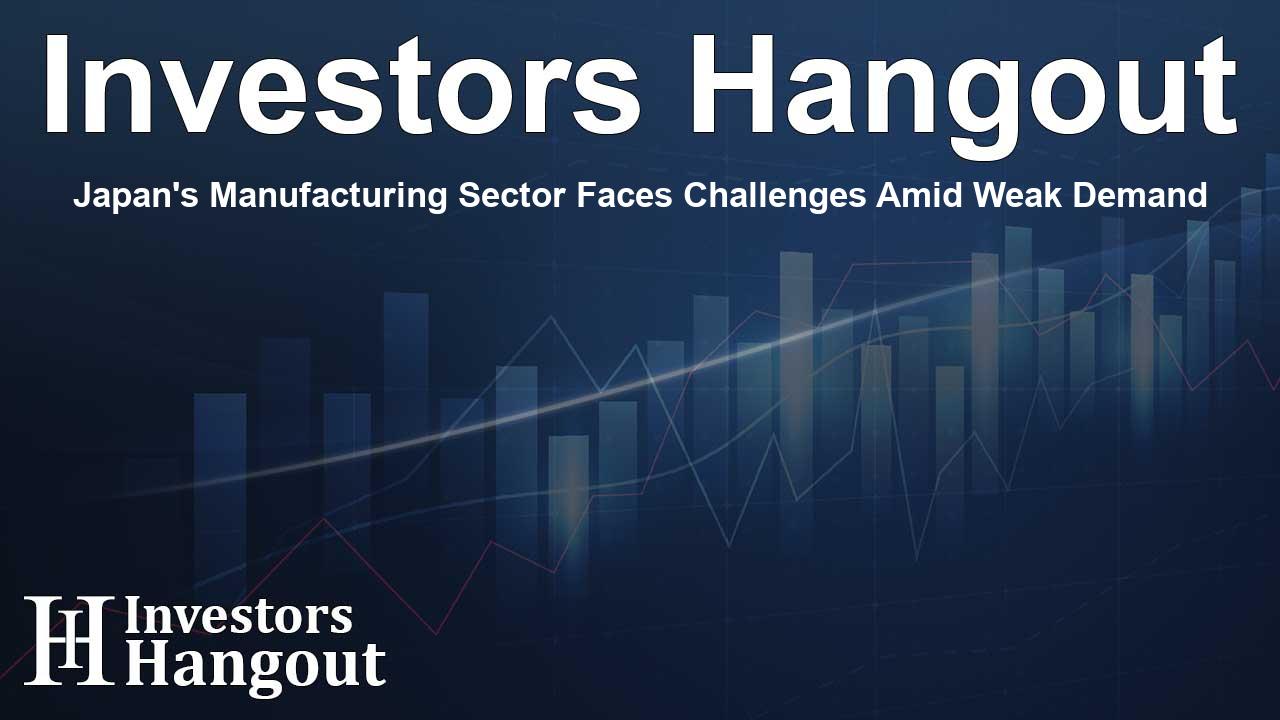Japan's Manufacturing Sector Faces Challenges Amid Weak Demand

Japan's Manufacturing Activity Experiences Setbacks
In a recent report, it was revealed that Japan's manufacturing activity faced notable challenges as demand weakened significantly. This was illustrated by the latest figures from a private sector survey conducted in September, indicating that the country's manufacturing sector is experiencing subdued conditions.
Current State of the Industry
The final au Jibun Bank Japan manufacturing purchasing managers' index (PMI) recorded a slight decrease to 49.7 in September, down from 49.8 in August. While this shows a minor decline, it is worth noting that the PMI slightly improved from an earlier flash reading of 49.6. This persistent figure of below 50.0 indicates that the industry has been in contraction for three consecutive months.
According to Usamah Bhatti from S&P Global Market Intelligence, the survey highlights ongoing muted trends across the manufacturing industry. The subindex related to output also revealed a contraction in production, primarily driven by the decline in new business opportunities.
Challenges Confronting Manufacturers
The survey noted a notable reduction in new orders, which have remained in a contraction phase since mid-2023. Firms reported that a stagnant economy, along with inventory adjustments and labor shortages, have significantly affected their ability to attract new orders. Moreover, weak sales in major markets such as the United States and China have contributed to a consistent decline in new export orders since March 2022.
Interestingly, while employment within the manufacturing sector increased for the seventh consecutive month in September, the growth rate was the slowest observed during this stretch. On the other hand, manufacturers continue to grapple with elevated costs associated with raw materials, labor, and logistics, even though inflation metrics had recently hit a five-month low.
Manufacturers' Responses to Adversity
To offset rising costs, many firms have opted to transfer these expenses to clients by raising output charges. However, it's noteworthy that the rate of increase in output charges was the slowest recorded since June 2021. Despite these challenges, manufacturers remain optimistic about the outlook for production, underpinned by expectations surrounding new product demand and mass production. Nevertheless, this confidence is tempered, as it recorded the lowest level since late 2022.
Manufacturers are also eyeing potential recovery and improvements in sectors such as semiconductors and automobiles, which could play a critical role in revitalizing their production capabilities.
What Lies Ahead for Japan's Manufacturing Sector?
Recent data indicate that Japan's factory output experienced a significant decline in August. This downturn was attributed to disruptions in motor vehicle production caused by adverse weather conditions, notably typhoons, as well as weakening sales in key markets like the U.S.
As Japan navigates through these economic challenges, it’s imperative for manufacturers to adapt their strategies to cope with the fluctuating demand landscape. This may include investing in technology, diversifying supply sources, and refining their product offerings to better align with market demands.
Frequently Asked Questions
What is the current status of Japan's manufacturing PMI?
The manufacturing PMI for Japan is currently at 49.7, indicating ongoing contraction in the sector.
Why are new orders declining in Japan's manufacturing industry?
New orders are declining due to a stagnant economy, inventory management issues, and labor shortages.
How have export orders been affected?
New export orders have been in decline since March 2022, primarily due to weak sales in major markets like the U.S. and China.
What is the employment trend in Japan's manufacturing sector?
Employment in the manufacturing sector increased for the seventh month in a row, but at the slowest pace in this stretch.
What are manufacturers hoping for regarding future production?
Manufacturers remain hopeful for a recovery in demand and mass production in sectors like semiconductors and automobiles.
About Investors Hangout
Investors Hangout is a leading online stock forum for financial discussion and learning, offering a wide range of free tools and resources. It draws in traders of all levels, who exchange market knowledge, investigate trading tactics, and keep an eye on industry developments in real time. Featuring financial articles, stock message boards, quotes, charts, company profiles, and live news updates. Through cooperative learning and a wealth of informational resources, it helps users from novices creating their first portfolios to experts honing their techniques. Join Investors Hangout today: https://investorshangout.com/
Disclaimer: The content of this article is solely for general informational purposes only; it does not represent legal, financial, or investment advice. Investors Hangout does not offer financial advice; the author is not a licensed financial advisor. Consult a qualified advisor before making any financial or investment decisions based on this article. The author's interpretation of publicly available data shapes the opinions presented here; as a result, they should not be taken as advice to purchase, sell, or hold any securities mentioned or any other investments. The author does not guarantee the accuracy, completeness, or timeliness of any material, providing it "as is." Information and market conditions may change; past performance is not indicative of future outcomes. If any of the material offered here is inaccurate, please contact us for corrections.